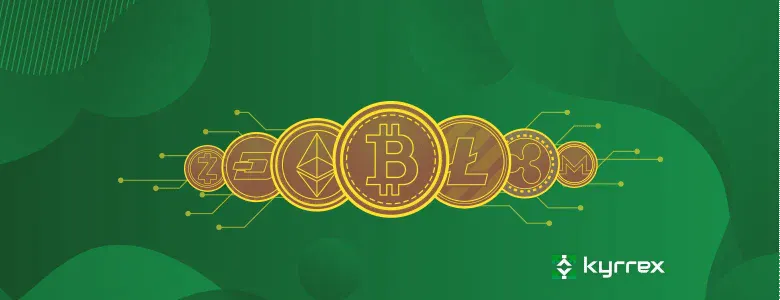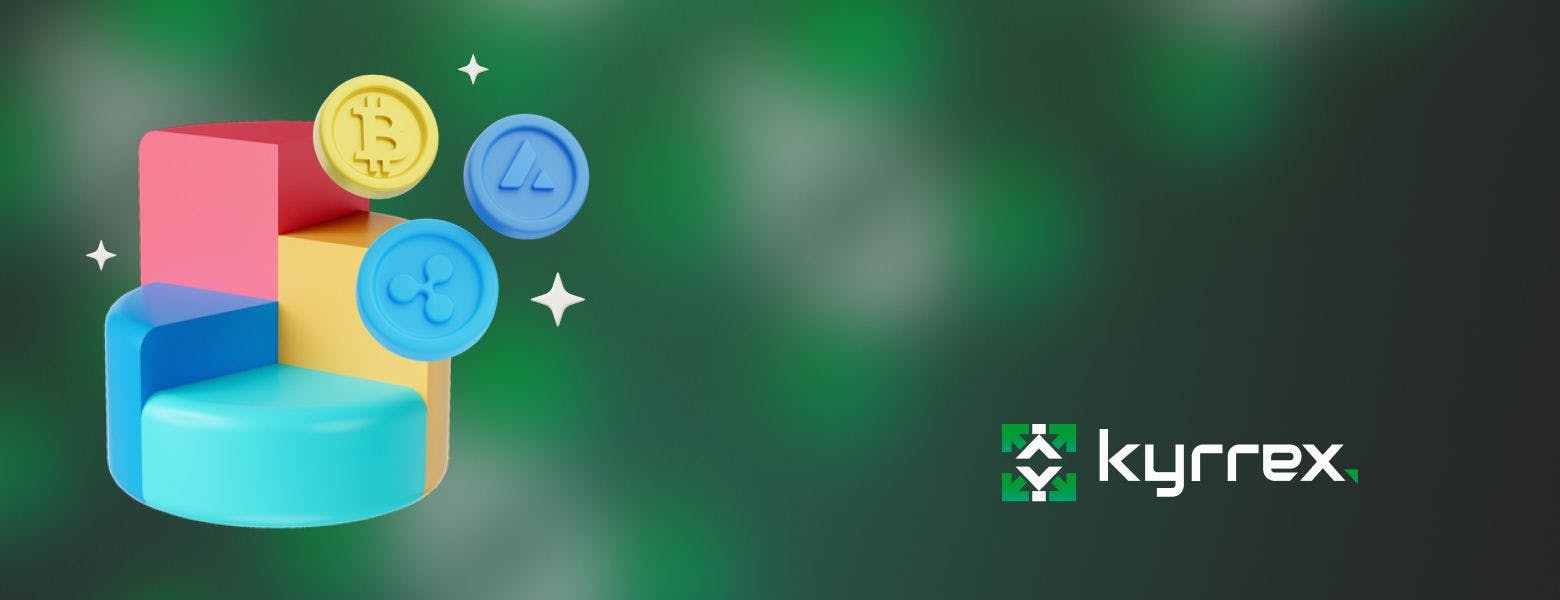
What is cryptocurreny and how does crypto work?

It’s no more news that digital currencies are the future of money and have come to stay. To get ahead and not be left behind in this changing world, you should learn how to use crypto and how cryptocurrency works. This guide will provide all that you need to hop seamlessly into the crypto bandwagon without any fears.
Let’s get started by understanding the purpose of cryptocurrency and the problems that it addresses. One existing issue in the traditional financial system is the monopoly of governments over paper currencies. It means that governments can easily control the value and supply of money through centralized bodies like the central bank.
The cryptocurrency was borne out of the need to create decentralized money devoid of governmental control. So, as we go further, we will answer questions like- How does cryptocurrency work?
How can I buy cryptocurrency as a beginner?
You will also learn the nitty-gritty of crypto transactions and the numerous processes occurring underneath. So, let’s get right into it.
What Is Cryptocurrency?
A cryptocurrency is a form of digital currency that is managed on a distributed ledger called a blockchain. It is all virtual (no hard currency) and is secured using cryptography (the art of encoding and decoding information). This digital currency system does not require you to depend on anyone (such as middlemen) to carry out transactions.
Unlike traditional paper money, cryptocurrency does not rely on a central authority like central banks for authorization, issuance, circulation or security. Most of these actions are guided by mathematical laws, thus, eliminating the need for a middleman. As a result, cryptocurrency now has many uses in various businesses setting. The emergence of crypto puts power into the hands of the users such that the whole cryptocurrency concept depends on the users to function.
Not only are crypto transactions decentralized but also fast, anonymous and secure. Since the prevalent use of e-commerce platforms for trading different commodities, products and services, digital money has become vital. For instance, you can make purchases using a cryptocurrency, even at your favorite online shopping store. Asides from being used for payments, they are also construed as Gold’s contender in terms of being a store of value.
However, there are several other use cases of cryptocurrency. You can also buy cryptocurrency or sell cryptocurrency online or even trade them similarly to stocks. But, how does cryptocurrency work for a beginner?
How Does Cryptocurrency Work For Beginners?
Cryptocurrency uses a decentralized technology that allows users to make transactions without the need for intermediary financial institutions. The most popular digital currency is Bitcoin and was launched by the pseudonymous Satoshi Nakamoto in 2009. Other heavily traded cryptocurrencies include Ethereum, Tether, Ripple, Litecoin.
As a beginner, you might wonder- how does cryptocurrency work? For the sake of simplicity, we’ll use Bitcoin to explain the underlying digital currency system and mechanism of a digital currency. Although there can be slight nuances compared to other cryptocurrencies, they work similarly at the very basic levels.
Let’s assume Bob, Alice and Jane perform some simple transactions. Bob sends X Bitcoin to Alice, who then sends Y Bitcoin to Jane. Each of these transactions is broadcasted between the nodes on the Bitcoin network. These nodes are computers that contain a copy of the Bitcoin software.
Anyone can have access to this software by downloading it on their computer. It contains a history of all the transactions that have ever occurred up to that moment. However, the nodes can operate from anywhere in the world, making them decentralized.
Once a transaction is made, each node receives the message and sends it along to the other nodes. Each transaction contains a digital signature (analogous to a written signature) which the nodes use to validate the authenticity of the transaction message. Simply, it’s like you are saying, “This transaction is valid because it has a unique signature.”
The transaction message and the two different but connected keys called the private and public keys make each digital signature unique. The private key is used to create the digital signature, while others use the public key to verify the signature.
In layman terms, the public key is how the nodes can check for the unique signature. However, nodes do so without seeing your private key (think of it as your secret password) but can verify its legitimacy through the signature. Afterwards, each node compiles all the verified transactions into a block and added to the existing blocks.
What Is Blockchain Technology?
Cryptocurrency transactions are managed on a distributed ledger called a blockchain. Like a regular ledger, a blockchain contains the records of cryptocurrency transactions in chronological order. However, it is encrypted using cryptography.
How does cryptocurrency transaction work? As mentioned earlier, the transactions performed in a given period are recorded into a file called block, which is verified by a list of validators called miners. The newly verified block contains a hash of the previous block, which also includes the block’s hash before it. Hence, the name blockchain was coined.
The cryptographic hash can be seen as a string of cryptographic numbers that references each block. It makes each block tamper-proof and prevents bad actors from manipulating previous blocks. Blockchains can be viewed as the technology that powers cryptocurrency. They are not a cryptocurrency themselves.
Cryptocurrency Mining: How Does It Work?
The nodes check the validity of transactions and approve the next block. These nodes are called validators, and they attempt to append new blocks to earn rewards. This process is called mining and is similar to the conventional meaning of gold mining, except that everything here is digital.
Mining is a very competitive, expensive and power-consuming process. As a result, miners are rewarded new bitcoins (and the transaction fees) for completing a block of verified transactions. It is also the mechanism through which new coins are released into circulation.
The rewards that miners receive act as an economic incentive for them to act honestly, help secure the network and prevent fraudulent actors. However, the mining reward is always halved every 210,000 blocks (roughly every four years) to create scarcity, driving price Northward. Since Bitcoin has a finite supply, all the coins would be entirely mined by the year 2140.
However, for miners to earn block rewards, they have to go through something known as proof-of-work. Here, miners attempt to solve a computational puzzle for an answer (hash) that has to be below the correct value (target hash). The first miner to come up with the right solution to the numeric problem receives the mining reward.
What happens is that each node feeds the data contained in a block (including the previous block’s hash) into a cryptographic hash function. The output is compared to the target hash to see if it is lower or higher. If not, the node reruns the data (by manipulating nonces – a random number guess) until it eventually gets a value below the target hash.
The hash is a one-way cryptographic code, meaning that you can’t get the input of a hash function from the output. Also, you can never get a different outcome from the same input, which is why the validators use nonces to generate the correct hash. So, your chances of success in mining boil down to your computer’s computational power and guesswork.
Due to the enormous number of nodes in the Bitcoin network, it takes about 10 min for a node to solve a block. You can picture the process this way. Let’s assume you pick a target value of 6 (the target hash is usually more complex). What happens is that miners attempt to get a value lower than 6 to receive the reward.
What Do I Need To Know About Cryptocurrency Business Opportunities?
The truth is, several cryptocurrency business opportunities have been created across various industries. For instance, with the advent of Bitcoin, many financial institutions have expanded their services to include digital currencies. Many such institutions now offer services like crypto trading, crypto derivatives, ETFs and options for investors.
El Salvador recently became the first country to legalize Bitcoin as legal tender. As a result, businesses in the country can keep their revenue in cash, cryptocurrency or a mix of both. In addition to other benefits like low fees, fast transactions and anonymity, cryptocurrencies like Bitcoin are seen as a better store of value.
Furthermore, you can also trade your cryptocurrencies through several trading platforms (brokers) instead of holding them in your wallet. It is similar to traditional trading, where speculators trade assets to predict specific price movements to make profits. Many trading platforms also allow margin trading, which is simply a trading technique where small price movements amount to huge profits.
How Can I Buy Cryptocurrency?
There are various ways through which you can purchase cryptocurrencies. Several crypto exchanges support a wide range of cryptocurrencies. You can easily make purchases through such exchanges by using fiat or other cryptocurrencies. For instance, you can buy Bitcoin on Kyrrex using fiats or by swapping other coins for Bitcoin.
You can also buy cryptocurrencies on peer-to-peer networks where buyers and sellers can transact directly with each other. Another use case of cryptocurrency is staking, which allows you to earn more coins (tokens) is by locking up your crypto assets for a specific period. Cryptocurrencies have also found use in borrowing and lending and other concepts like yield farming.
How Does The Digital Currency System Work?
In the past decade, the mainstream adoption of cryptocurrency has skyrocketed due to increased institutional adoption. It has paved the way for many other innovations and novel ways of thinking about the future of money. For instance, most central banks are also actively working on developing their digital currencies (CBDCs).
Cryptocurrencies and blockchain technology appear to be very promising in terms of complementing the loopholes in the existing financial system. However, one characteristic feature is their wild price volatility. Therefore, as a beginner, you should be careful when buying a cryptocurrency. It is imperative to use a secure, insurance-backed platform like Kyrrex for buying and selling cryptocurrency. At Kyrrex, we provide a comprehensive understanding of digital currencies, cryptocurrency and how it works.
For more information, visit our website at https://kyrrex.com/.






